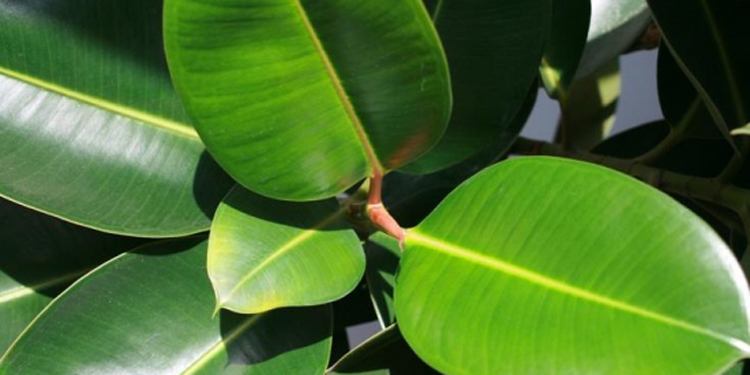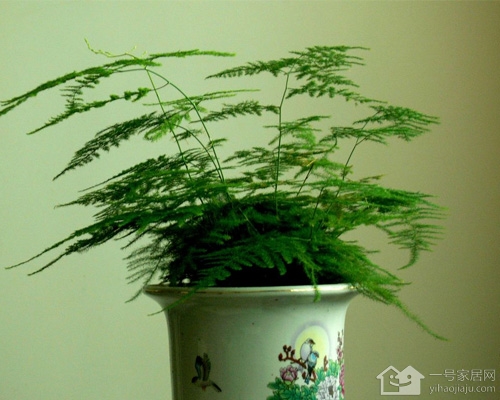How to maintain asparagus in winter?
Asparagus likes warmth and has poor cold resistance, so it is not suitable to spend the winter outdoors. It usually moves indoors one or two weeks before "Frosts Descent" (when the minimum temperature drops to about 10%). Do not put it near the kitchen, stove and heating pipe after entering the room. Dust and fuming oil will block the stomata of branches and leaves and hinder normal breathing and growth.
Watering should be controlled in winter and windows should be opened for ventilation when the temperature is high during the day. To keep the air moist and prevent branches and leaves from yellowing, spray the leaves with the same water as room temperature every 3 to 7 days to make them moist and clean. Fertilize once every half month. The daily temperature is kept at 15 ℃ to 20 ℃ and direct sunlight is carried out, and the basin soil is dry and watered. After the above reasonable maintenance, asparagus can still keep its color green and luxuriant in winter.
In the depths of winter, the plant can be covered with a transparent plastic bag so that it will not be frozen, but the lower part of the bag does not have to be stabbed to death. Asparagus can survive the winter safely as long as the room temperature is not less than 3 ℃.
Key points for winter conservation of indoor plant asparagus asparagus is a potted plant that many flower friends like to grow. Asparagus is generally easy to raise and not easy to die. I also raised asparagus. I put it on my windowsill. I don't manage it very much. Occasionally water it. Now that winter is coming, the weather is getting colder and colder, and asparagus is not so easy to raise. The following is to introduce the conservation and management of asparagus in winter: morphological features: asparagus, also known as Pinus elliottii, Phyllostachys pubescens, is a perennial evergreen vine foliage plant, a famous ornamental plant. The roots of asparagus are slightly fleshy, the stems are soft and tufted, and the leaves degenerate into scales, light brown, growing at the base of leafy branches; leafy branches have branchlets, green. Most of the scales on the main stem are spiny. Flowers small, bisexual, white-green, flowering in spring. The berries are globose and purple-black when ripe. Growth habits: asparagus likes warm, moist, semi-shady environment. Not resistant to cold and drought. Like fertile, loose, well-drained sandy loam. Like Yin, like dampness, afraid of drought, avoid excessive dampness. Winter maintenance points 1. Temperature: bamboo is afraid of cold in winter. Potted asparagus should maintain an ambient temperature of more than 5 ℃ in winter to avoid freezing. two。 Watering: control watering in winter. Excessive watering can easily cause root rot and leaf yellow shedding when the basin soil is too wet. When watering, we should pay attention to the water temperature should be as close as possible to the surrounding temperature, so as to reduce the stimulation of water temperature discomfort to the root system. 3. Fertilization: asparagus is not a good fertilizer plant, but there can be no lack of fertilizer, fertilizing as little as possible in winter, fertilization should be thin and diligent, do not apply thick fertilizer, otherwise it is easy to cause branches and leaves to turn yellow. 4. Illumination: asparagus likes semi-overcast environment, avoid hot sun exposure, sunny day is suitable for pots to be placed outside to receive sunlight, conducive to its light and function. 5. Potted soil: asparagus should be fertile soil, if there is no soil change for a long time, nutrients are in short supply, there will be branches and leaves yellowing phenomenon. One part of rotten leaf soil, two parts of garden soil and one part of river sand are often used as substrate in asparagus basin soil. How to preserve asparagus
Asparagus, also known as Phyllostachys pubescens and mountain grass, is a perennial vine evergreen herb of Liliaceae. Stems slender and articulate, tufted. The leafy branches are slender, bright green and dense like a feather. Flowers small, bisexual, white, more than blooming in spring and summer. The berries are globose, green at first and purplish black when ripe. There are many horticultural varieties, including short asparagus with clumpy stems, dense and short leafy branches, dense leaves, shorter plants and more durable growth. Asparagus branches and leaves are slender, shaped like clouds, green and light, quiet and beautiful, giving people a sense of vitality, softness and comfort. Usually dwarf potted plants, placed on the desk, desk, shelf, beautify the living room, study, is a popular indoor foliage flowers, but also fresh cut flowers vase, tie bouquets, baskets and other important matching materials.
Asparagus is native to South Africa. Like warm, humid climate and semi-shady environment, afraid of drought, avoid dry wind, not cold-resistant, like loose, fertile, well-drained sandy loam. In order to make asparagus beautiful in shape and beautiful in branches and leaves, the following work needs to be done in maintenance and management:
(1) Water.
Asparagus is neither drought-tolerant nor waterlogged. The watering times and amount of water during the growth period should be determined according to the season, growth and dry and wet conditions of the basin soil. Usually watering in order to irrigate the water in the basin quickly seeps into the soil, but the basin soil does not accumulate water. If it is not dry or watered, it will be poured thoroughly, not "cut off water at the waist". Asparagus likes the air to be moist, so in dry or hot weather, in addition to keeping the basin soil moist, water should often be sprayed on the ground around branches, leaves and flowerpots to increase air humidity. Watering should be controlled when the ambient temperature is low in winter.
(2) fertilization.
Asparagus likes fertilizer, generally spring and autumn season can be every half a month or so to apply dilute liquid fertilizer, after the plant is set to control fertilization, so as not to grow or draw growth vines. Fertilization is generally stopped when the temperature is high in summer or low in winter. If the soil is not fertilized for a long time and the basin soil is not changed, the nutrient supply will be insufficient, which will lead to plant weakness and yellowing of branches and leaves, so the basin soil should be turned over and changed every 1-2 years before germination in early spring. 4 parts of rotten leaf soil, 4 parts of garden soil and 2 parts of river sand can be used in the basin soil. in addition, add a small amount of fully mature cake fertilizer mixed culture soil.
(3) light.
Asparagus likes a semi-overcast environment and must not be exposed to strong light. Family maintenance can be placed in front of the window or balcony with bright scattered light all the year round. If you can move it to the half-light in spring and autumn when the sun is not very strong, it will be more beneficial to its fertility.
(4) shaping and pruning.
In order to make asparagus beautiful in shape and beautiful in branches and leaves, it is necessary to carry out shaping and pruning in time. The one-year-old seedlings do not need to be pruned, and the two-year-old asparagus can grow climbing new stems, which can be pruned at different heights to make them send out new branches and leaves from the upper leaf base, resulting in different levels of shaping effect. At the same time, cut off the dense branches, dead branches and weak branches to facilitate ventilation.
(5) Winter management.
Asparagus likes to be warm, it should be placed on the south-facing windowsill in winter, and it is better to keep it above 10 ℃ at room temperature. If placed in a place where no light can be seen for a long time in winter, poor ventilation or too low room temperature can easily cause branches and leaves to wither and yellow, or even fall off and die. In the room heated by heating or stove in winter, the branches and leaves should be sprayed with water close to room temperature once or twice a week, which not only improves the air humidity around potted flowers, but also makes the branches and leaves green and fresh. In addition, if the harm of shell insects is found, it should be treated in time.
- Prev

What if the rubber tree is infected with the disease?
Rubber trees are mainly susceptible to anthracnose and gray spot. Anthracnose mostly occurs on leaves, especially on both sides of leaf veins. The lesion is a round or oval gray spot at first, and then gradually extends to the whole leaf: black particles appear on the spot in the later stage of anthracnose, and pink colloid can be extruded under wet conditions.
- Next

How to preserve asparagus
Asparagus, also known as Phyllostachys pubescens and mountain grass, is a perennial vine evergreen herb of Liliaceae. Stems slender and articulate, tufted. The leafy branches are slender, bright green and dense like a feather. Flowers small, bisexual, white, more than blooming in spring and summer. The berries are globose, green at first and purplish black when ripe. There are many varieties of horticulture, among which dwarf asparagus
Related
- Fuxing push coffee new agricultural production and marketing class: lack of small-scale processing plants
- Jujube rice field leisure farm deep ploughing Yilan for five years to create a space for organic food and play
- Nongyu Farm-A trial of organic papaya for brave women with advanced technology
- Four points for attention in the prevention and control of diseases and insect pests of edible fungi
- How to add nutrient solution to Edible Fungi
- Is there any good way to control edible fungus mites?
- Open Inoculation Technology of Edible Fungi
- Is there any clever way to use fertilizer for edible fungus in winter?
- What agents are used to kill the pathogens of edible fungi in the mushroom shed?
- Rapid drying of Edible Fungi

